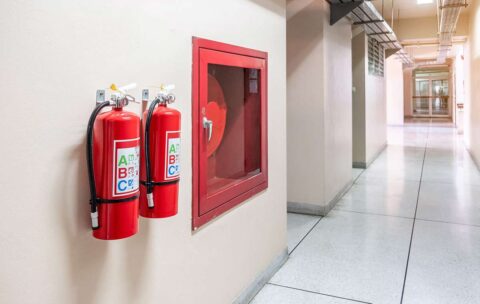Fire Protection Systems for Emergency Operations
This course will teach the essential procedures for gathering and …
What you'll learn
The purpose of this course is to provide Incident Commanders (ICs) and response crews with an understanding of the fire protection systems in buildings. It aims to explain how these systems work and how their proper use can help ICs and crews effectively handle building fires. Additionally, the course aims to educate fire officers on how to acquire this information through effective pre-incident planning and how to communicate this knowledge to other firefighters who need to respond and function effectively using these systems during emergencies.
Hazardous Materials Code Enforcement
This 5-day course aims to help students gain and share …
What you'll learn
To gain the knowledge and skills needed to assess the risks associated with hazardous materials, including identifying and categorizing the materials and applying relevant codes, standards, and regulations to prevent incidents and minimize harm to people and property.
To conduct thorough inspections of potential hazardous material releases in both occupied and unoccupied structures, focusing on fire safety, health, and overall life safety.
To evaluate the level of fire and life safety measures in place for the manufacturing, transportation, storage, use, and disposal of hazardous materials.
Safety and Risk Analysis
This course focuses on identifying safety risks and analyzing how …
What you'll learn
Identify risks in various work settings.
Apply basic risk analysis and estimation concepts to different work environments.
Use statistical analysis and probability analysis.
Understand procedures for loss exposure in property, net income, liability, and personnel areas.
Fire Detection and Alarm System Design
This course aims to provide an understanding of the process …
What you'll learn
List down the different fire signatures and how spot-type detectors work.
Evaluate the necessary documentation for a newly-designed fire detection and alarm system.
Discuss fire detection design concepts, including selection, total/partial coverage, building construction, and spacing.
Recognize the importance of manufacturer-published fire/safety guides.
Apply the concept of fire alarm notification appliances, including selection, coverage, building construction, spacing, and placement.
Illustrate an understanding of the major aspects of a Fire Alarm Control Panel (FACP), power source selection requirements, battery derating calculation, battery capacity calculation, and voltage drop of NAC circuit.
Explain how fire suppression is integrated with FACP, how the NAC circuit is integrated, and the input/output matrix.





